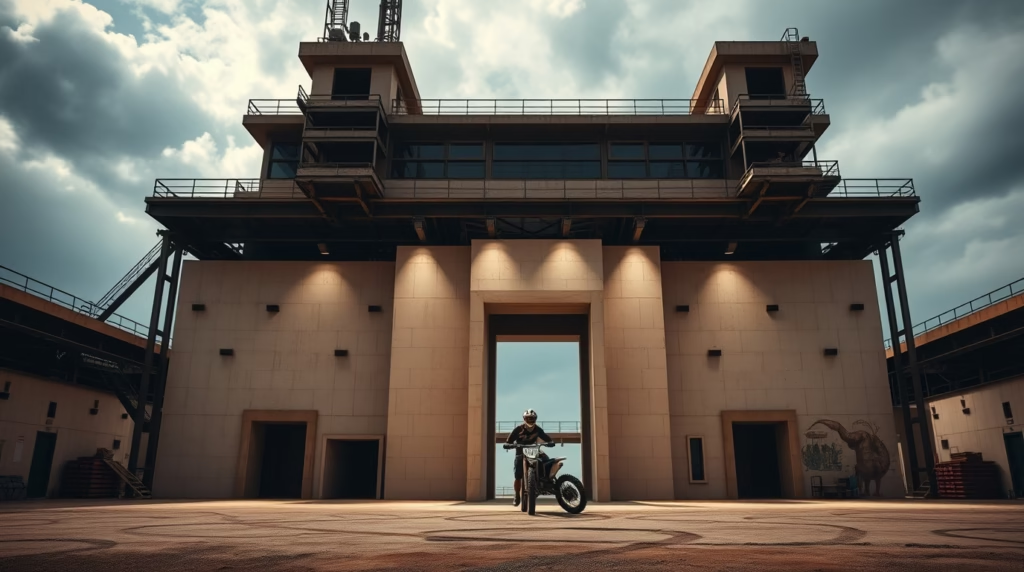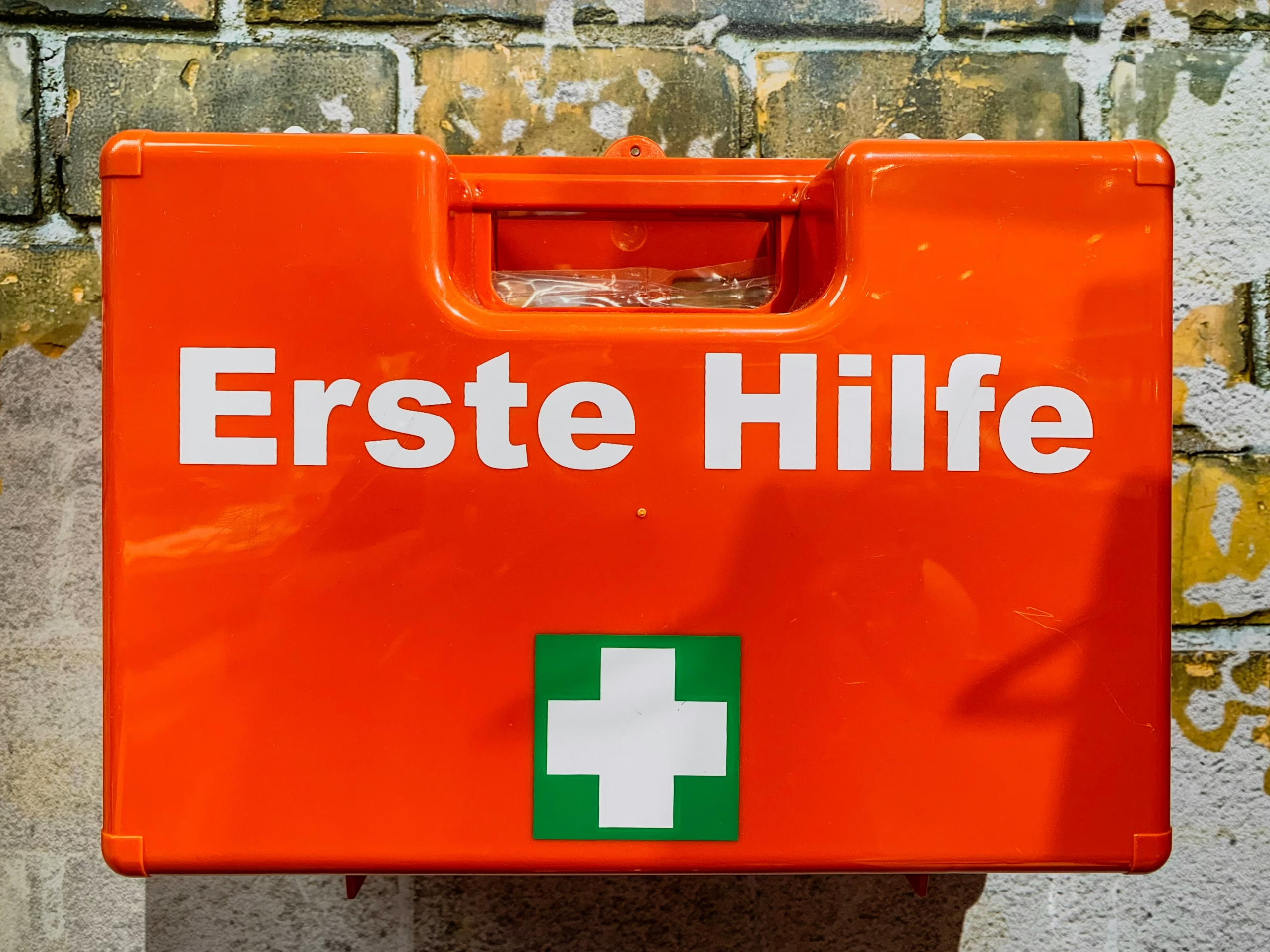Introduction to Off-Road Adventures and Injuries
Off-road adventures have surged in popularity among outdoor enthusiasts seeking exhilarating experiences beyond traditional roadways. Activities such as driving all-terrain vehicles (ATVs), riding motorcycles, or hiking rugged trails provide a thrilling combination of excitement and a deep connection with nature. The appeal lies not only in the stunning landscapes but also in the freedom to navigate untouched terrain, captivating both solo adventurers and groups alike.
Engaging in off-road activities carries certain inherent dangers. The unpredictable nature of off-road settings—ranging from diverse terrains and shifting weather to possible obstacles—can result in accidents that may cause injuries. Typical injuries associated with off-road experiences can vary from minor cuts and bruises to more serious conditions like fractures and concussions. It is essential for anyone participating in such activities to be aware of the risks of off-road related injuries.

Moreover, off-road environments often lack the immediate access to medical facilities that one might find in urban settings, making preparedness for injuries all the more critical. Those who venture into these wild terrains must be aware of the importance of knowing how to manage injuries effectively when they occur. Having a comprehensive understanding of off-road accident injury treatment methods, as well as possessing basic first-aid skills, is essential in ensuring the safety and well-being of all participants. Proper knowledge in this area can mean the difference between a minor setback and a serious health crisis in the remote outdoors.
A proactive approach to safety, encompassing both careful planning and skills training, can significantly reduce the likelihood of accidents during off-road adventures. By recognizing and respecting the inherent risks, adventurers can enjoy their explorations while remaining prepared to handle any injuries that might arise.
Common Off-Road Injuries: What to Watch Out For
Engaging in off-road activities presents various risks that can lead to injuries, undermining the thrill and enjoyment of the adventure. Among the most common off-road injuries are sprains, fractures, lacerations, and concussions. Understanding these injuries is essential for effective off-road accident injury treatment and prevention.
Sprains frequently occur when joints are twisted beyond their normal range of motion, particularly during abrupt twists or falls. These injuries can vary in severity from mild to severe, affecting the ligaments that support joints such as the ankle, knee, or wrist. The American Academy of Orthopaedic Surgeons has reported that ankle sprains are particularly prevalent among off-road enthusiasts, often necessitating swift treatment to prevent further damage.
Fractures represent another serious concern, particularly in high-impact sports such as dirt biking or ATV riding. Bones may break or crack due to falls or collisions, with common sites including wrists, arms, and collarbones. According to data from various recreational safety organizations, fractures are not only painful but may also lead to lengthy recovery periods, thus underscoring the necessity for proper protective gear and first aid readiness.
Lacerations, which are cuts or tears in the skin, can arise from falls, collisions with branches, or sharp objects in off-road environments. These injuries may vary in depth and severity, occasionally requiring stitches or surgical intervention if the wound is deep. Prompt cleaning and treatment are crucial to prevent infections.
Lastly, concussions are another risk associated with off-road activities, especially in cases of head trauma. Symptoms of a concussion can range from headaches to confusion or profound fatigue. Understanding these common injuries allows adventurers to take practical precautions and to seek appropriate off-road accident injury treatment when necessary.
Immediate First-Aid Steps for Off-Road Injuries
When venturing into off-road environments, the potential for accidents increases significantly due to the unpredictability of the terrain. In the unfortunate event of an injury, knowing the immediate first-aid steps can be vital for ensuring the well-being of the injured party and minimizing complications. The first action should involve assessing the injury to determine its severity. Check for consciousness and breathing, and if these are absent, initiate CPR immediately while calling for emergency services.
Once the immediate life-threatening issues are addressed, it’s essential to control bleeding. Apply direct pressure using a clean cloth or bandage on the wound. If the blood seeps through, avoid removing the original bandage; instead, place another one on top and continue applying pressure. Elevation of the injured area above the heart can help reduce bleeding. In cases where the bleeding does not stop, it may be necessary to utilize a tourniquet, keeping in mind the appropriate time limits for application.
Next, immobilizing the affected area is crucial. For limb injuries, utilize splints made from available materials like sticks or rolled-up magazines to restrict movement. Ensure that the splint does not constrict blood flow, and secure it with cloth or tape. This is particularly important to prevent further injury before professional medical help arrives.
Read more about: Off-Road Safety Made Easy with Advanced GPS Tracking
Above all, maintaining a calm demeanor is essential. Reassuring the injured party can reduce panic and encourage cooperation, making it easier to administer first aid effectively. In stressful situations, clear communication about what is happening can help assuage fears. Taking these steps can considerably improve the prospects of effective treatment for off-road accident injuries in the critical moments before professional help is available.
When to Seek Professional Medical Help
When engaging in off-road activities, it is crucial to remain vigilant for signs that may indicate a serious injury. Recognizing these signs can be the difference between timely off-road accident injury treatment and complications that may arise from delay. One of the most significant indicators that professional medical assistance is necessary is severe bleeding. If a wound appears deep, is gushing, or does not stop bleeding with direct pressure, it is essential to seek help immediately.
Unconsciousness is another critical flag. Should an individual become unresponsive, this is a medical emergency requiring urgent action. It is important to assess responsiveness and ensure a clear airway for the person in need. Breathing difficulties also demand immediate attention; symptoms such as gasping for air, wheezing, or an inability to speak can indicate severe respiratory distress. These conditions should not be taken lightly, as they may lead to severe health repercussions if not managed promptly.
Additionally, other red flags include severe pain, which may suggest fractures or internal injuries, swelling in limbs, and any deformities. If a rider shows signs of confusion, disorientation, or memory loss, these could be signs of a concussion or head trauma, both of which necessitate professional evaluation. Lastly, if off-road accidents cause persistent nausea, vomiting, or abdominal pain, these symptoms may indicate internal injuries that require imaging studies or surgical intervention.

Being knowledgeable about when to obtain professional medical help not only ensures one’s safety but also enhances the likelihood of effective off-road accident injury treatment. In such situations, erring on the side of caution and seeking professional help as soon as possible is always the best policy.
The Importance of a Well-Stocked First-Aid Kit
When embarking on off-road adventures, the unpredictability of the terrain presents inherent risks. As such, the significance of having a well-stocked first-aid kit cannot be overstated. A properly equipped first-aid kit serves as a vital resource in managing injuries that may arise during off-road activities, ranging from minor scrapes to more severe incidents that require prompt attention.
Essential items to include in an off-road first-aid kit typically encompass adhesive bandages of various sizes, sterile gauze pads, antiseptic wipes, and adhesive tape. These items are crucial for managing minor cuts and abrasions that are common when navigating rugged landscapes. Additionally, including a triangular bandage and a splint can assist in immobilizing suspected fractures or sprains, which can be life-saving during an off-road accident injury treatment scenario.
Moreover, a comprehensive first-aid kit should never lack a pair of scissors and tweezers, which are indispensable for cutting bandages or removing splinters from wounds. It is also advisable to carry pain relief medications such as ibuprofen or acetaminophen, as discomfort can impair judgment during emergencies. Furthermore, including emergency contact information and a first-aid manual can be invaluable in guiding the responder through treatment protocols.
Equally important is the consideration of the specific environment of your off-road journey. Whether traversing wooded trails, desert landscapes, or mountainous terrain, the kit should reflect potential hazards, such as snake bite kits or insect sting relief. Ultimately, ensuring that your first-aid kit is well-stocked not only enhances your preparedness but also significantly improves your capability to respond effectively to off-road accidents and injuries. Remember that in the world of off-roading, preparation is key to safety and well-being.
Basic Emergency Protocols to Know
Understanding the basic emergency protocols is crucial for anyone engaging in off-road activities. An off-road accident can happen quickly, and knowing how to respond can make a difference in both injury management and the efficiency of rescue efforts. The first step in emergency response is to call for help. Use a reliable communication device, such as a mobile phone or two-way radio, and ensure you have a signal, as many off-road locations may have limited coverage.

When making an emergency call, it is essential to provide clear and concise information about your location. This typically includes recognizable landmarks or GPS coordinates if available. Clearly stating the nature of the off-road accident injury treatment required is equally vital; this information aids responders in preparing for the situation, ensuring they bring the appropriate supplies and personnel. If you are unsure of the exact location, be as descriptive as possible to help guide them to your site.
Effective communication with emergency responders upon their arrival is also paramount. Provide them with vital information regarding the injuries sustained, how the accident occurred, and any known medical history of the injured party. This transparency ensures that first responders can deliver appropriate and timely medical care, which may include off-road accident injury treatment strategies tailored to the situation.
Additionally, if you are trained in basic first aid, you can initiate immediate measures while waiting for emergency services. This may include stabilizing the injured person, managing bleeding, or preventing further injury until help arrives. Remember, remaining calm and focused will facilitate a smoother rescue operation and improve the chances of a positive outcome for the injured individual.
Tips for Preventing Off-Road Injuries
Engaging in off-road activities can be exhilarating, yet it is vital to prioritize safety to minimize the risk of injuries. One of the most effective ways to prevent accidents is to wear appropriate gear. High-quality helmets, padded clothing, and sturdy boots significantly reduce the likelihood of serious injuries in the event of an accident. Investing in protective equipment designed for off-road conditions is not only prudent but can be lifesaving.
In addition to proper gear, adhering to safe driving practices is essential. This includes keeping a safe distance from other vehicles, understanding the terrain, and maintaining a speed that is manageable given the conditions. Off-road enthusiasts should be familiar with their vehicles’ capabilities and limitations, ensuring they do not exceed those boundaries while navigating trails. Regular vehicle maintenance plays a crucial role in safety; ensuring that brakes, tires, and suspension systems are in optimal condition is a basic yet often overlooked component of safer off-road experiences.
Physical training and preparedness can also contribute to a safer off-road experience. Building strength and endurance through appropriate fitness regimens can enhance one’s ability to handle challenging terrains, making it less likely for accidents to occur. Additionally, familiarization with first aid practices can provide peace of mind; understanding how to respond to injuries, including basic off-road accident injury treatment, can vastly improve outcomes in emergencies.
Lastly, maintaining awareness of one’s environment is paramount. Being cognizant of weather conditions, wildlife, and the presence of other off-road users can prevent potentially dangerous situations. Taking the time to assess the trail and ensuring that all group members are aware and informed can further lessen the chance of accidents. Through these preventive measures, off-road enthusiasts can significantly reduce the risk of injuries and enhance their overall experience.
Real-Life Stories: Off-Road Injuries and Lessons Learned
Off-road adventures can be exhilarating, but they also come with significant risks. Many enthusiasts have encountered injuries during their journeys, and their stories often serve as cautionary tales. One such experience comes from a veteran off-roader, Mark, who was riding his all-terrain vehicle (ATV) in a mountainous region. He lost control while navigating a steep incline, resulting in a severe leg injury that required extensive rehabilitation. Mark emphasizes the importance of wearing proper gear, stating that a helmet and knee pads could have minimized his injuries. His experience highlights the necessity of familiarizing oneself with the terrain before embarking on a ride, as preparation can dramatically reduce the likelihood of accidents.
Similarly, Sarah, an avid dirt biker, shares her encounter with an off-road accident that occurred due to inclement weather. Riding in the rain, she encountered mud and slippery surfaces that led to her losing her balance and falling off her bike. Fortunately, she only sustained minor scrapes, but she learned a crucial lesson about the importance of checking weather conditions before heading out. Proper planning, including an awareness of environmental factors, can play a critical role in preventing off-road accident injuries. Sarah now speaks at local off-road clubs, emphasizing that riders should develop their skills in various conditions to better handle unexpected situations.
Moreover, James recounts his experience during a challenging off-road trip that was marred by a broken wrist after mistakenly attempting a risky stunt with his vehicle. This incident taught him the significance of understanding one’s limits and the risks involved in off-road activities. In hindsight, James acknowledges that had he practiced more safety measures and followed guidelines for off-road accident injury treatment, his outcome might have differed. All these stories collectively underline the essence of preparation, situational awareness, and the need for safety measures when engaging in off-road activities. By learning from past experiences, enthusiasts can cultivate safer practices in their adventures, ultimately enhancing their enjoyment and well-being.
Conclusion
Off-roading can be an exhilarating experience, offering a unique blend of adventure and exploration. However, it is paramount to prioritize safety to ensure that these excursions remain enjoyable and free of avoidable injuries. Throughout this guide, we have discussed several important measures that every off-road enthusiast should adopt. These practices not only bolster your safety but also equip you with crucial skills to handle potential accidents efficiently.
First and foremost, conducting a thorough pre-ride inspection of your vehicle is essential. This includes checking brakes, tires, and operational systems to prevent mechanical failures that could lead to accidents. In addition to this, wearing appropriate safety gear—such as helmets, gloves, and knee pads—can significantly reduce the severity of injuries in the event of an accident.

Education and preparedness go hand in hand. Familiarizing oneself with off-road navigation techniques and the terrain can mitigate risks associated with unforeseen obstacles. Moreover, carrying a well-stocked first aid kit is imperative for treating injuries when they occur. Understanding basic first aid principles, particularly those tailored to off-road accident injury treatment, can make a critical difference while awaiting emergency response.
Another important aspect is to remain aware of your surroundings and constantly assess the conditions of the trail and the weather, as they can change unexpectedly. Traveling with a group also enhances safety, as companions can assist during emergencies and provide support in navigating challenging situations.
In conclusion, taking proactive steps in safety and preparedness can transform your off-road adventures into rewarding experiences. By embracing the measures discussed, you can significantly reduce the risk of injuries and equip yourself for effective management of emergencies that may arise during your journey. Adventure awaits, but safety should always lead the way.


